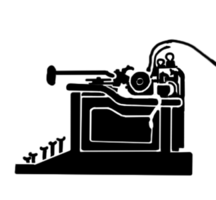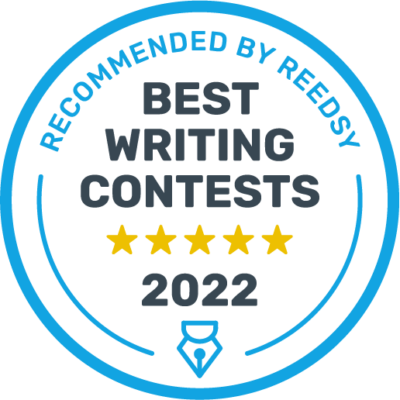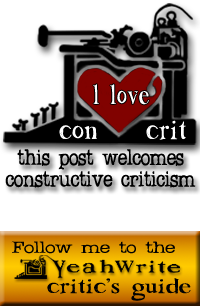The 2014 yeah write summer series continues! Check out Christine’s weekly kickoff post to find everything you need to know about the guidelines, format, and lounges for our third summer series. You’ll find the grid and posting guidelines at the bottom of this post.
Don’t forget to drop by the yeah write coffeehouse and introduce yourself. It’s open 24-7 and it’s the place to go for casual small talk, introductions, and other writing-related conversations.
Our weekly summer series writing topics continue. This week, we’re tackling punctuation and other mechanics of writing.
The Perils of Punctuation
Punctuation is one of those things that we tend to use intuitively, but sometimes our intuition is a bit off. Most people know when to use a period and when to use a question mark. But knowing when you should use a semicolon instead of a colon demonstrates that you take the craft of writing seriously, and is the sort of thing we consider when selecting a piece for editors’ pick.
With that said, let’s look at some punctuation that often causes confusion.
Commas
A comma is used to indicate the smallest pause in a sentence, while a period indicates the longest pause and a semicolon falls somewhere in between. But when should you use a comma?
To separate elements, like nouns, adjectives, descriptive phrases, and lists.
- I planted tomatoes, eggplants, cucumbers, and beans in my garden.
To separate non-restrictive clauses, which are clauses that could be left out without affecting the sentence. Non-restrictive clauses are often introduced by the word which (while restrictive clauses are often introduced by that).
- The eggplants, which were almost ready to pick, had disappeared overnight.
To separate independent clauses joined by a conjunction.
- The squirrels laughed at me from the trees, but I vowed to have the last laugh.
To separate dependent clauses when the dependent clause comes before the main clause.
- When the cucumbers started to vanish, I nearly lost my mind.
To introduce something (exclamation, a phrase, direct address)
- Squirrels, this means war!
Finally, a brief word on the serial comma (also known as the Oxford comma), which is when you use a comma before the conjunction that joins the last two items in a list of three or more things. The serial comma’s job is to remove ambiguity and make your meaning crystal clear, which allows your reader to focus on your story instead of getting bogged down in trying to figure out what you meant.
Colons
A colon is used to introduce something to the reader. Its job is to direct the reader’s attention to what comes next. There are four general ways you should use a colon in your writing. The first is to introduce an element (or elements) related to the independent clause that precedes the colon.
- Mary finished packing her son’s suitcase: hopefully she hadn’t forgotten anything.
The second is to introduce an element or a series of elements after an introductory phrase, like as follows or the following.
- Mary had packed the following items: shorts, t-shirts, socks, underwear, and toiletries.
The third is to introduce speech or dialogue.
- Mary’s son yelled from downstairs: “Mom, the bus is here!”
The fourth is to identify the person being addressed in formal communication (e.g., a letter or an email).
- Dear Mom: I really miss you. Oh, and you forgot to pack my toothbrush.
Semicolons
A semicolon is used to link things that are related. There are two situations in which you should use semicolons. The first is to link two independent clauses. They can be two closely related thoughts:
- Tracy lay on her towel and closed her eyes; the angle of the sun was just perfect.
Or two clauses connected by conjunctive adverbs (however, also, consequently, etc.) or transitional phrases (as a result, for example, etc.):
- Tracy wanted to fall asleep; however, she was waiting for her piña colada to arrive.
The second way you can use a semicolon is to link items in a list when any of the items contain commas. In this case, semicolons are used to provide clarity.
- Since she’d arrived, Tracy had tried a Margarita, from Mexico; a Caipirinha, from Brazil; a Singapore Sling, from Singapore; and a Zombie, from the United States.
Em Dashes
An em dash is a long dash, not to be confused with a hyphen, used to indicate a sudden break:
- “Allow me to demonstrate how sharp—ow, my finger!”
Or to indicate something that either explains or amplifies the element that precedes it, kind of like an aside.
- Neville—who was a knife salesman—fainted at the sight of his own blood.
The Takeaway
That concludes my review on using punctuation. The rules above are not always hard and fast, especially when writing poetry or prose—but bending the rules should always be done mindfully.
The most important thing to remember when you use any of the elements above (or any other types of punctuation) is clarity. I can’t stress that enough. The rules are there to help you tell your story. Your use of punctuation should make the reader’s experience easier, not harder. When you sprinkle commas everywhere, or use semicolons with wild stylistic abandon, you aren’t helping anyone, least of all yourself.
Come on back on Thursday for a review on formatting your writing and other structural tips.
This week’s optional prompt is: Should I Stay or Should I Go?
Go ahead and answer that question in a gargleblaster, incorporate it in your longer fiction, or use it as inspiration for your nonfiction. You can also ignore it completely if you’ve already got a great idea!
Below you’ll find the badge for the summer supergrid #172. Copy the code under the badge and paste it into the html or text view of your blog editor. Having trouble? Contact christine@yeahwrite.me for tech support.
<a href="https://yeahwrite.me/summer-series-172/"> <img src="https://yeahwrite.me/wp-content/uploads/2014/07/summer172.png"> </a>
 Loading InLinkz ...
Loading InLinkz ...






